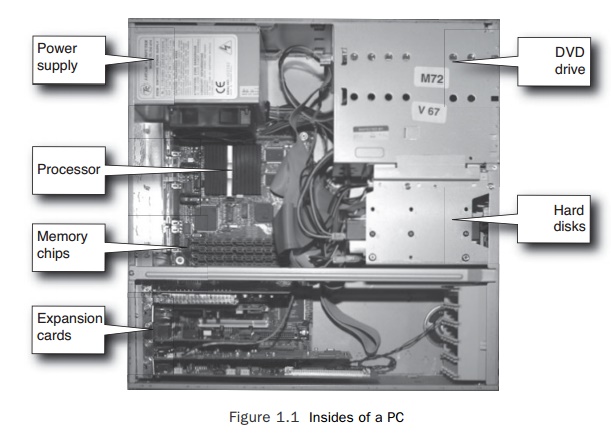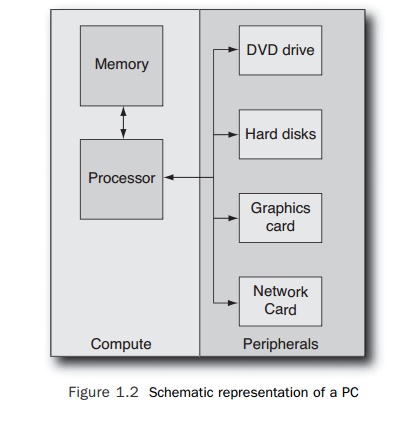Chapter: Multicore Application Programming For Windows, Linux, and Oracle Solaris : Hardware, Processes, and Threads
Examining the Insides of a Computer
Examining
the Insides of a Computer
Fundamentally a computer comprises one or more processors and some
memory. A number of chips and wires glue this together. There are also
peripherals such as disk drives or network cards.
Figure 1.1 shows the internals of a personal
computer. A number of components go into a computer. The processor and memory
are plugged into a circuit board, called the motherboard. Wires lead from this to peripherals such as disk
drives, DVD drives, and so on. Some
functions such as video or network support either are integrated into the
motherboard or are supplied as plug-in cards.
It is possibly easier to understand how the components of the system are
related if the information is presented as a schematic, as in Figure 1.2. This
schematic separates the compute side of the system from the peripherals.


The compute performance characteristics of the system are basically
derived from the performance of the processor and memory. These will determine
how quickly the machine is able to execute instructions.
The performance characteristics of peripherals tend
to be of less interest because their performance is much lower than that of the
memory and processor. The amount of data that the processor can transfer to
memory in a second is measured in gigabytes. The amount of data that can be
transferred to disk is more likely to be measured in mega-bytes per second.
Similarly, the time it takes to get data from memory is measured in
nanoseconds, and the time to fetch data from disk is measured in milliseconds.
These are order-of-magnitude differences in
performance. So, the best approach to using these devices is to avoid depending
upon them in a performance-critical part of the code. The techniques discussed
in this book will enable a developer to write code so that accesses to
peripherals can be placed off the critical path or so they can be scheduled so
that the compute side of the system can be actively completing work while the
peripheral is being accessed.
Related Topics